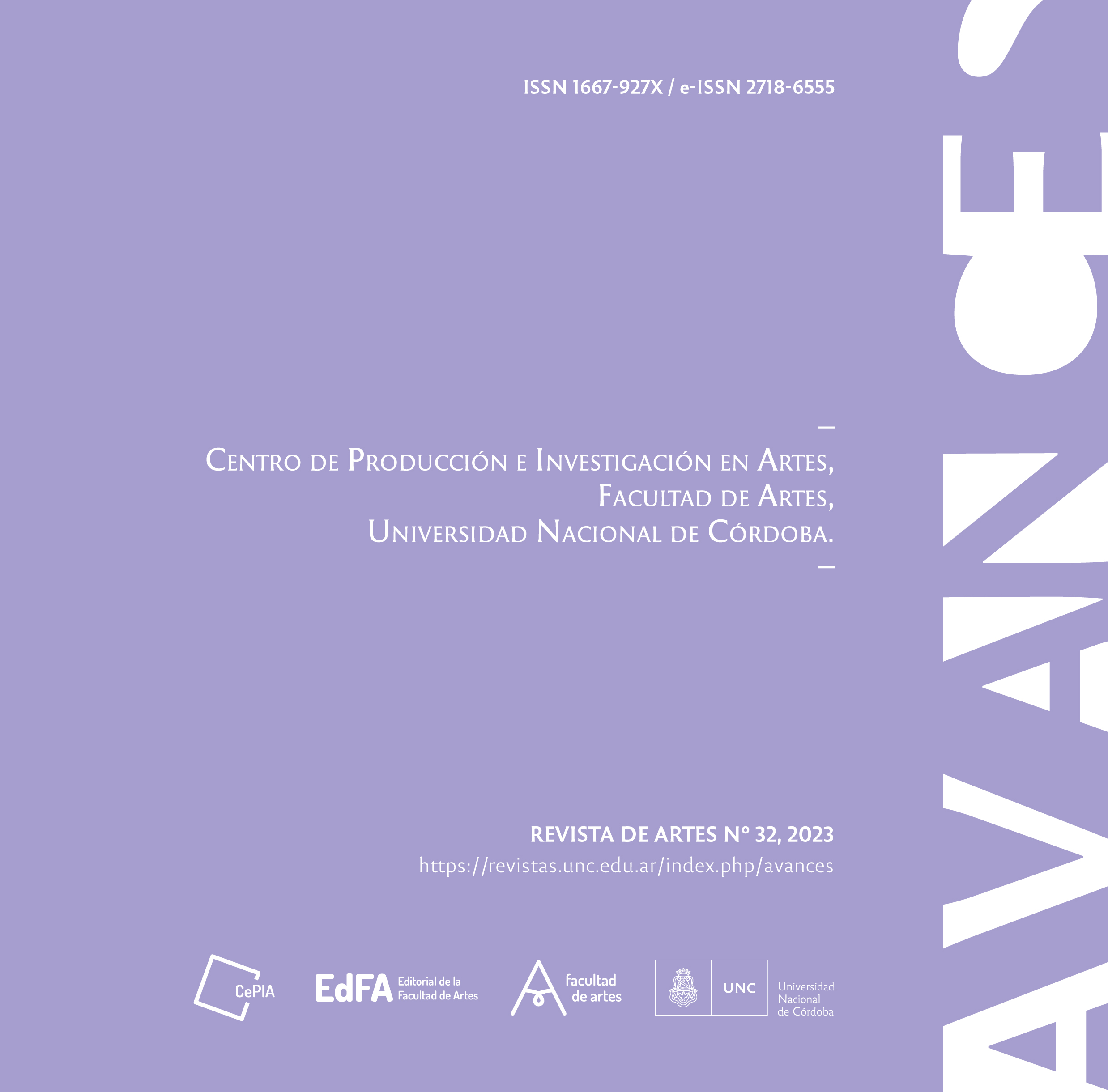An analytical approach to Harold Gramatges's Mobile III
Keywords:
Graphics, Gramatges, Cuba, Avant-garde, Analysis, Móvil IIIAbstract
The study of the works belonging to the musical avant-garde of the 1960s is still a pending task for Musicology. This research carries out the musical analysis of Mobile III for flute and piano by the Cuban composer Harold Gramatges Leyte-Vidal (Santiago de Cuba, 1918-Havana, 2008), using the score, sound recording and graphics specially generated for this work. With the aim of revealing and assessing the multiple elements that make up the musical discourse, two graphs were designed to help the reader fully understand the work by visualizing variables such as dynamics-intensity, registers, tempometry and timbre. These graphs are the result of the analyst's interpretation, and are not related to the visuality of the score being studied or the composer's comments during the interviews. The associations of timbres in colors, of intensities/tempos in lines, and of determined/indeterminate textures in geometric figures, helped the analyst to decode the sound discourse of Mobile III.
Downloads
References
Acosta, L. (2001). Los Móviles de Harold Gramatges [libro de partituras]. Ed. Letras Cubanas .
Boulez, P. (2009). Pensar la música hoy. Colegio Oficial de Aparejadores y Arquitectos Técnicos de la Región de Murcia, Colección de Arquilectura 52.
Gramatges, H. (2001). Móviles. [Edición facsímil]. Editorial Letras Cubanas.
Guerrero, J. (2019). La música abordada como una práctica: una relectura del concepto de intertextualidad. Cuadernos de Música Iberoamericana, enero-diciembre, 32, pp. 73-93.
Guzmán, R. (2020). Harold Gramatges, análisis musicográfico del Móvil II. Cuadernos de Investigación Musical, enero-junio, 12, pp. 79-101. https://revista.uclm.es/index.php/cuadernosdeinvestigacionmusical/article/view/2280.
López Cano, R. (2001). Del Cronos al Topos. Espacio y tiempo en las músicas del siglo XX. En M. Vega Rodríguez y C. Villar Taboada (Coords.), El tiempo en las músicas del siglo XX (pp. 101-122). Ed. Glares Gestión Cultural.
Mandolini, R. (2016). Semiología musical y musicología: aportes de la filosofía de la complejidad. Panambí, 2, pp. 27-46.
Nogueira, I. (2002). El mestizaje intertextual en la música contemporánea: un estudio de caso. Boletínmúsica, 8, pp. 32-43.
Padilla, A. (1999). El Análisis musical dialéctico. Ed. Helsinki.
Sánchez, J. A. (2010). Dramaturgia en el campo expandido. Repensar la dramaturgia, errancia y transformación. Murcia: Centro Párraga. Centro de Documentación y Estudios avanzados de Arte Contemporáneo.
Tarasti, E. (1994). A theory of musical semiotics. Indiana University Press.
Downloads
Published
Issue
Section
License
Copyright (c) 2023 Rafael Guzmán Barrios

This work is licensed under a Creative Commons Attribution-NonCommercial-ShareAlike 4.0 International License.





















